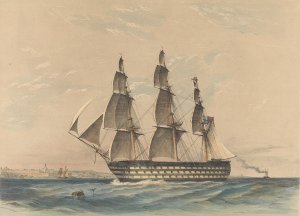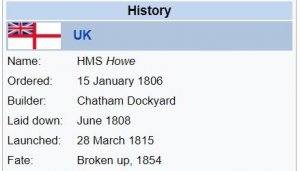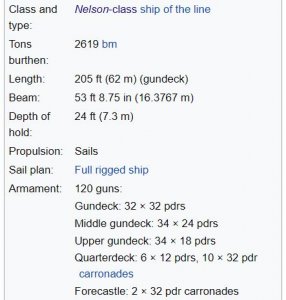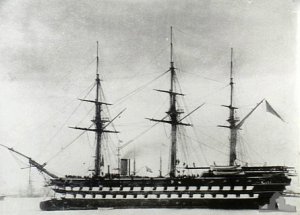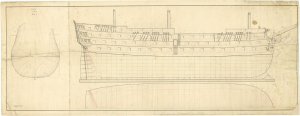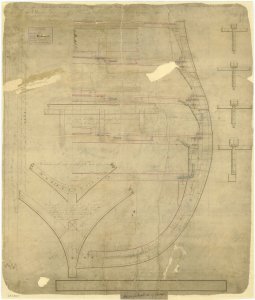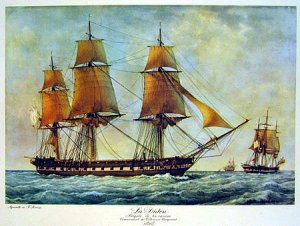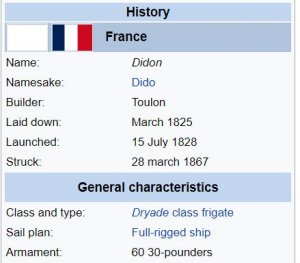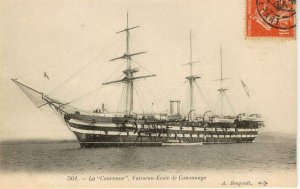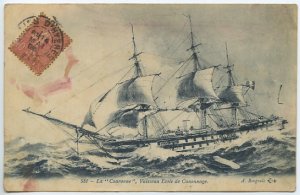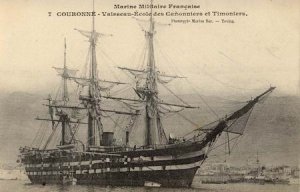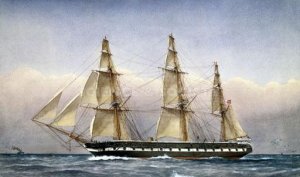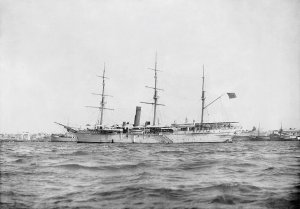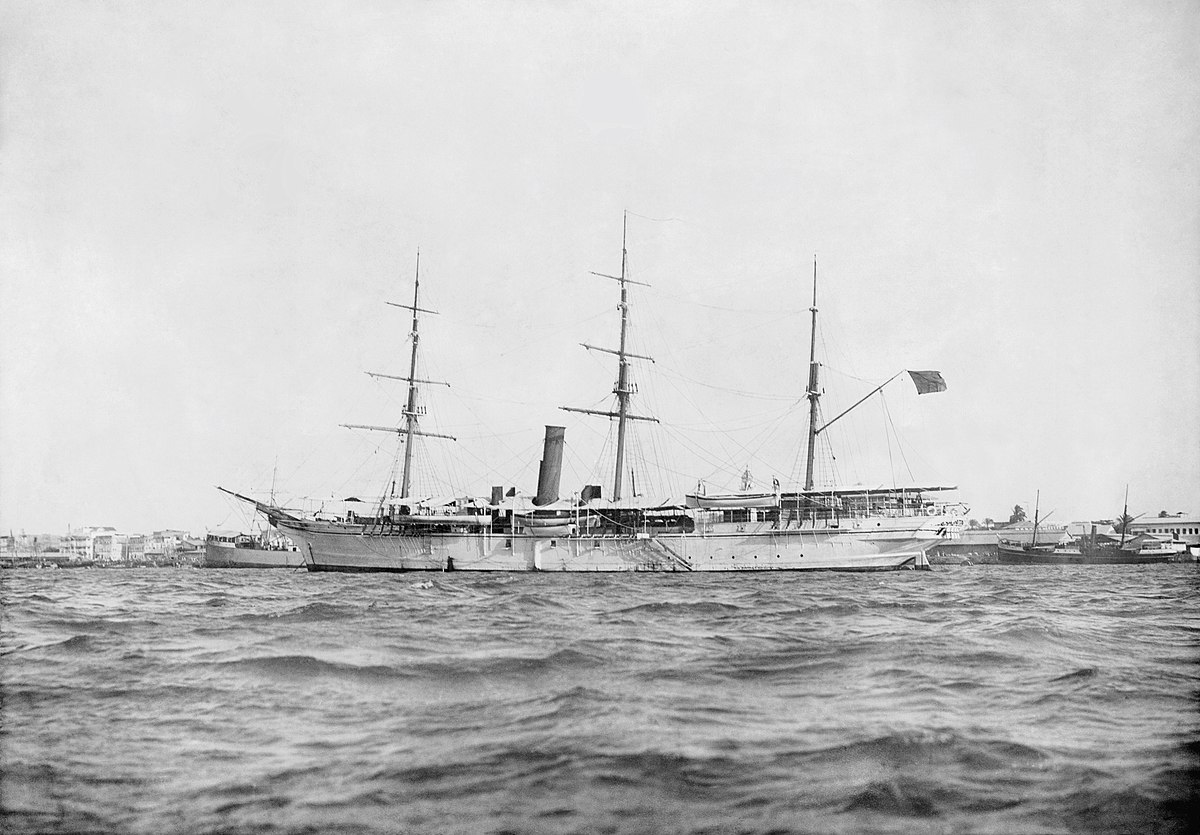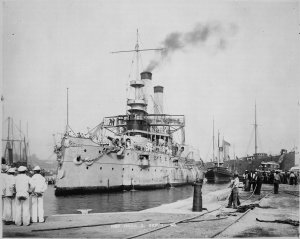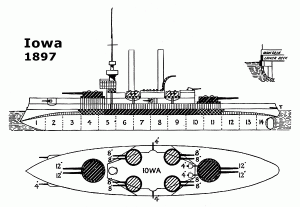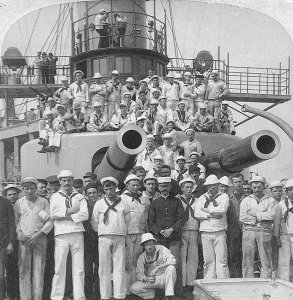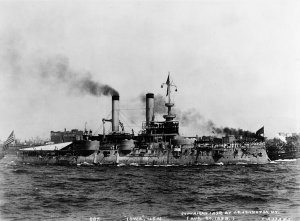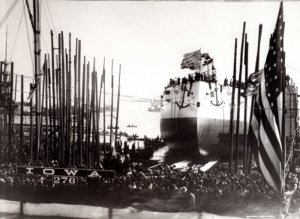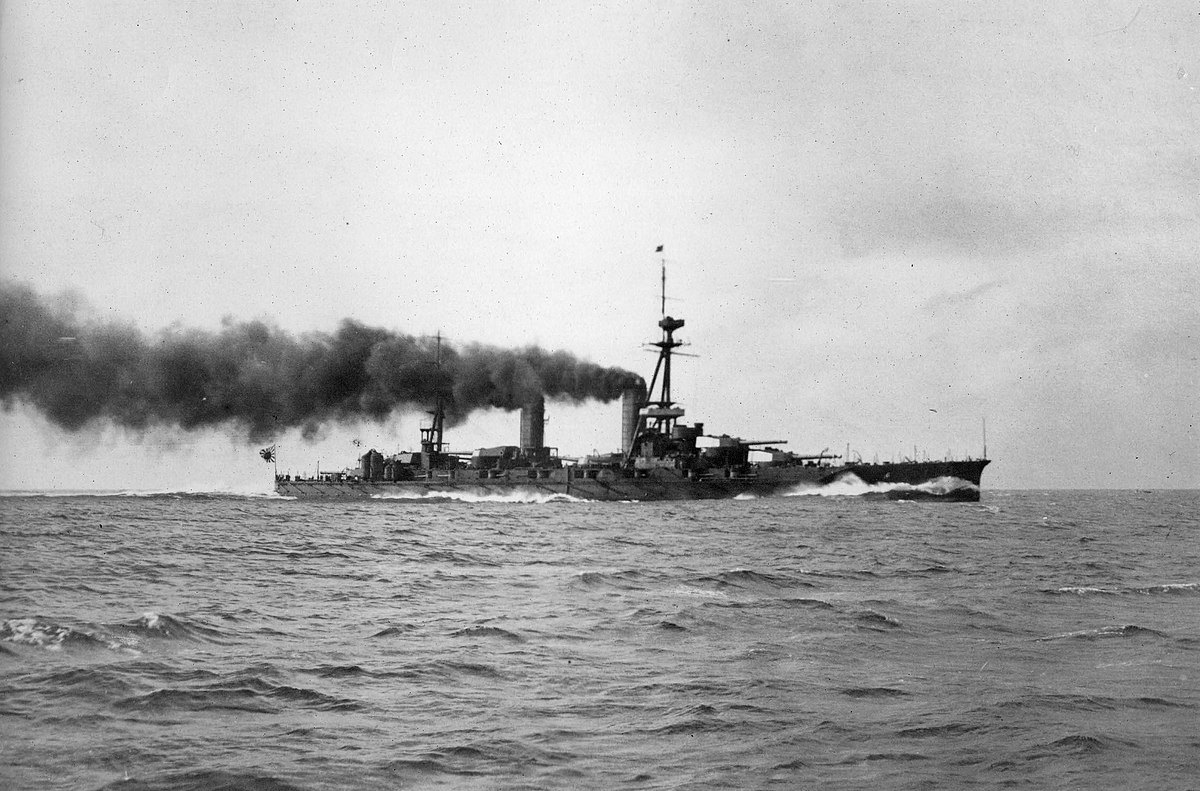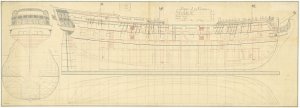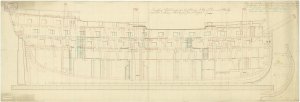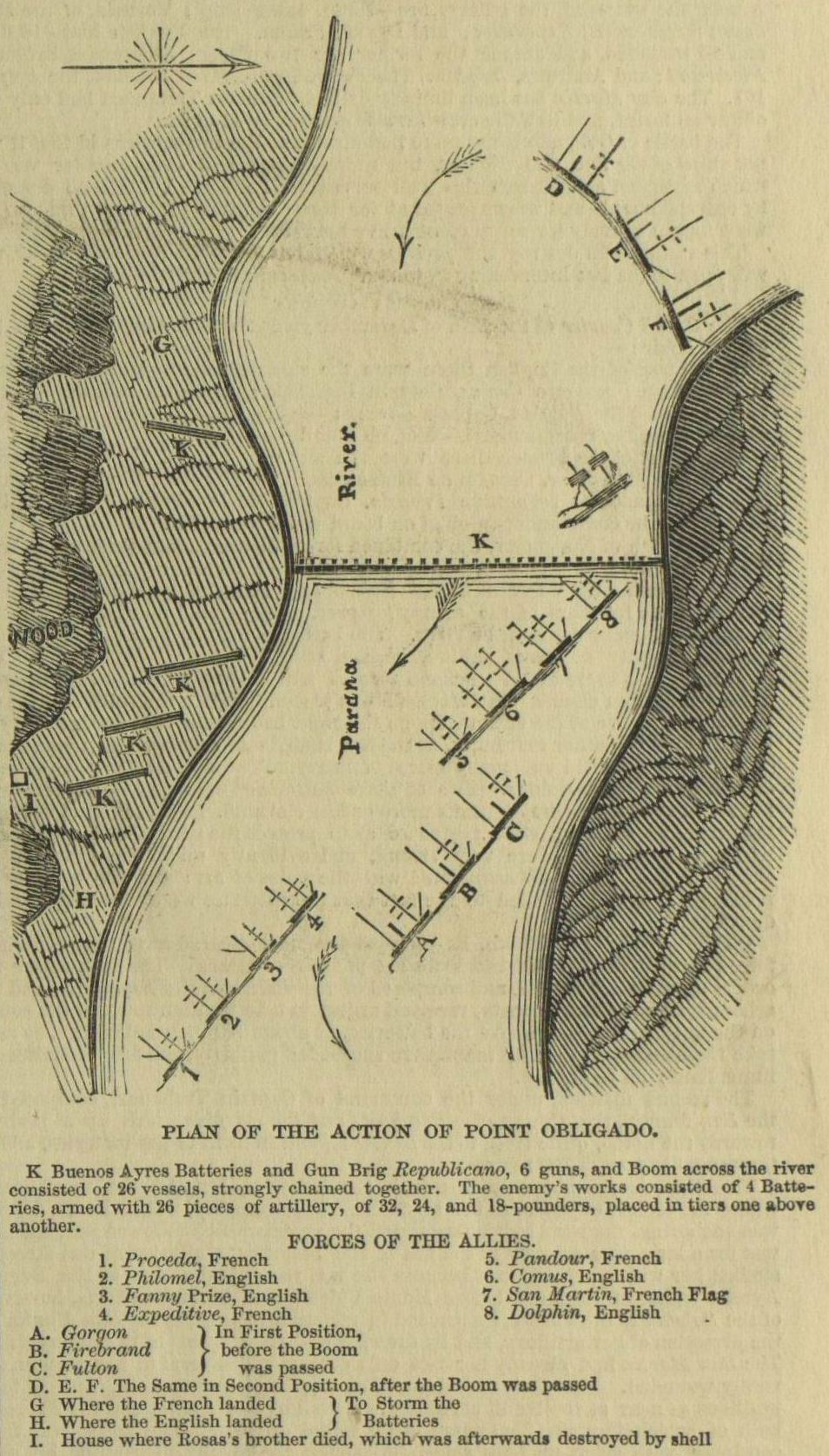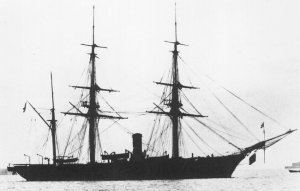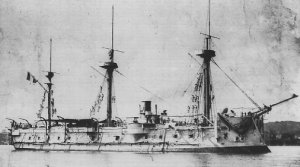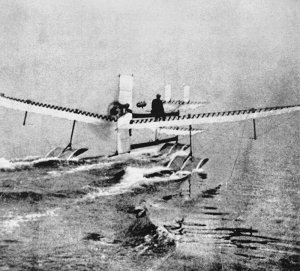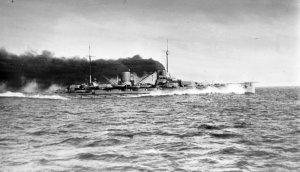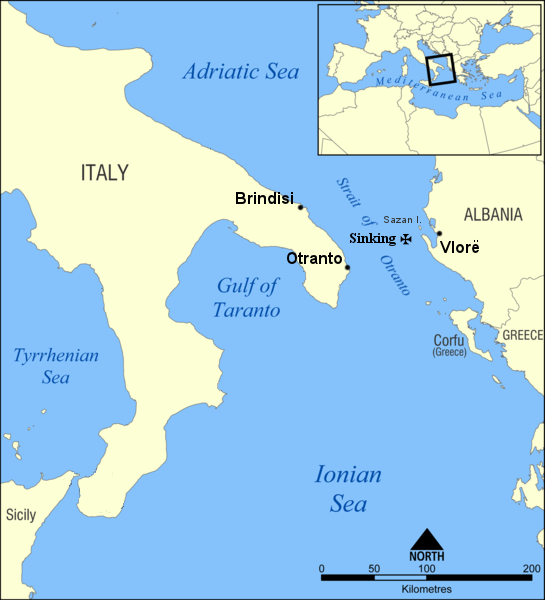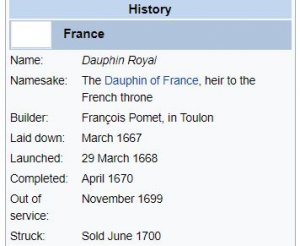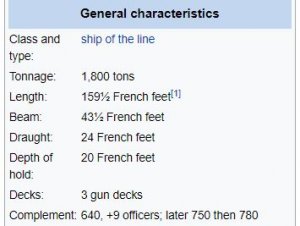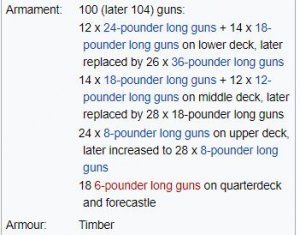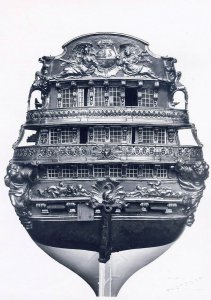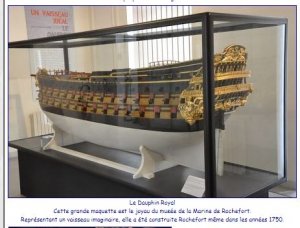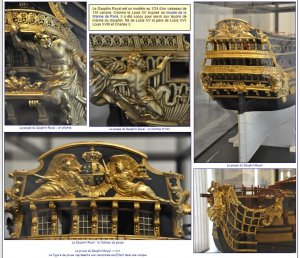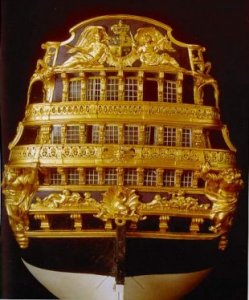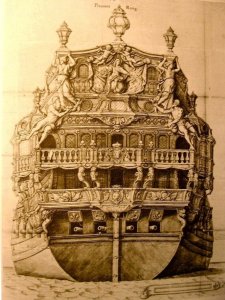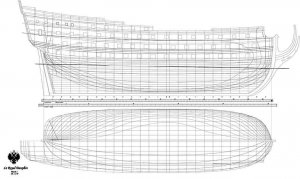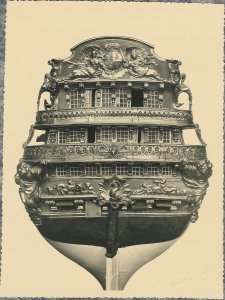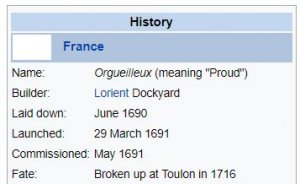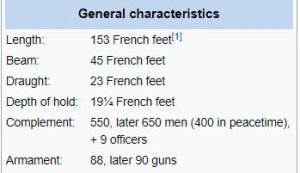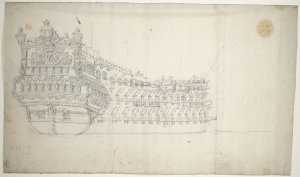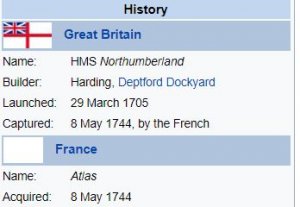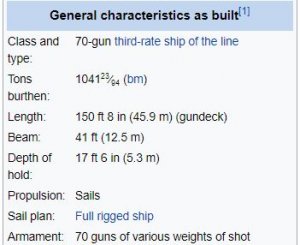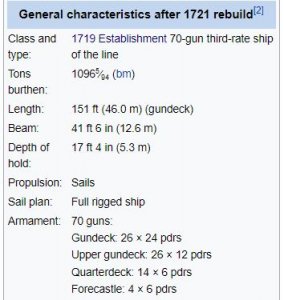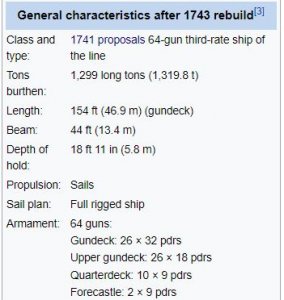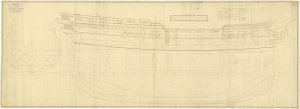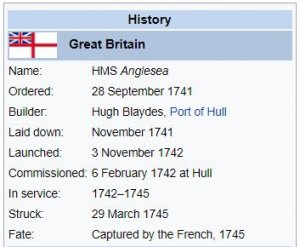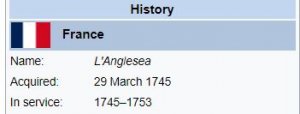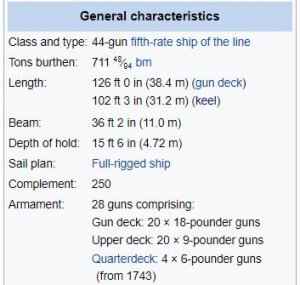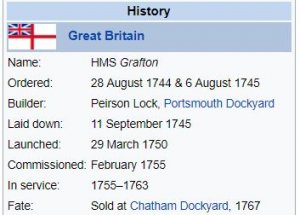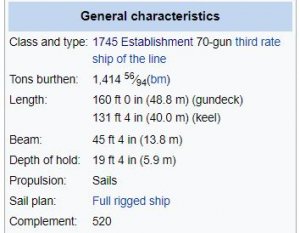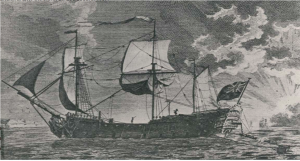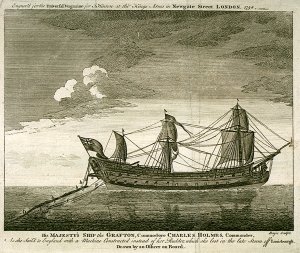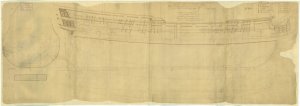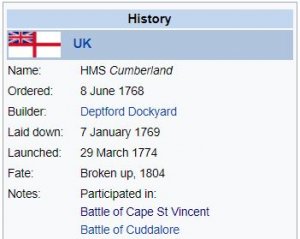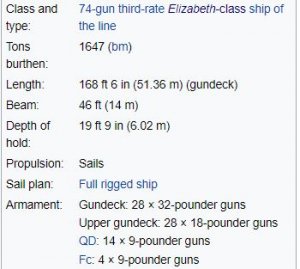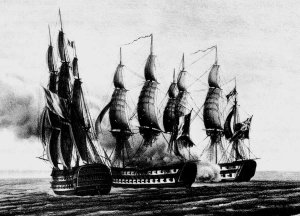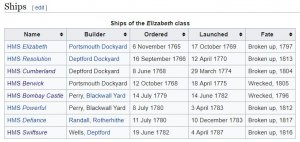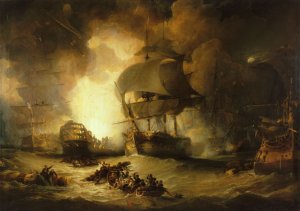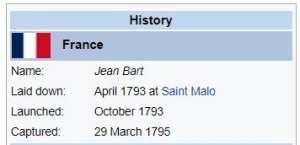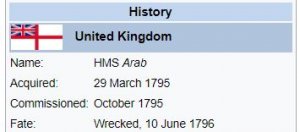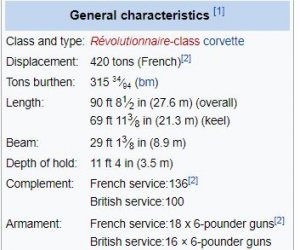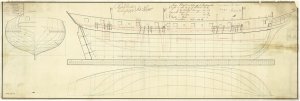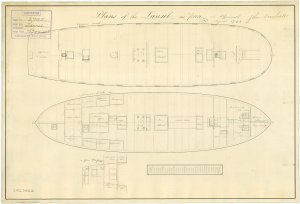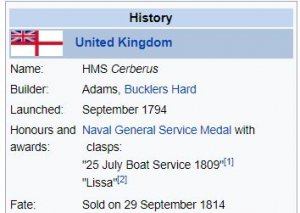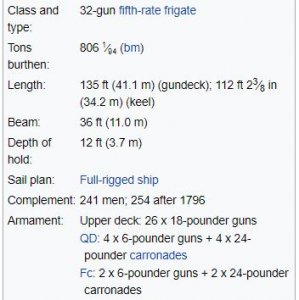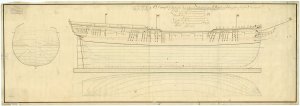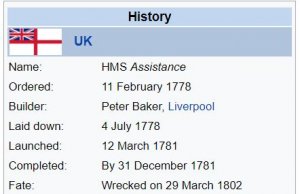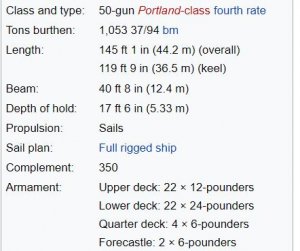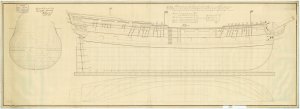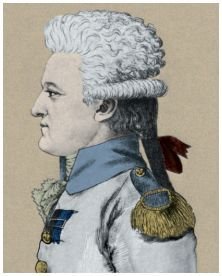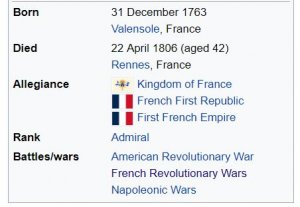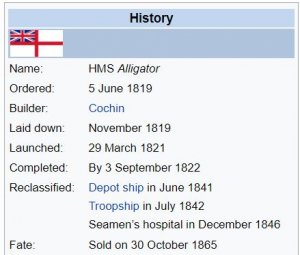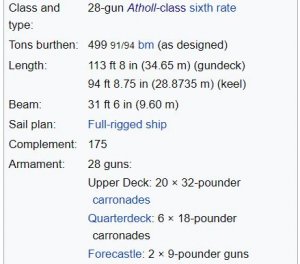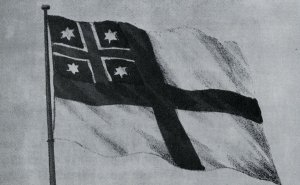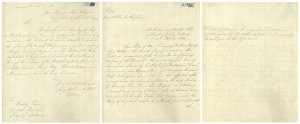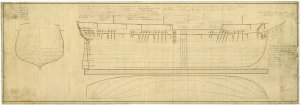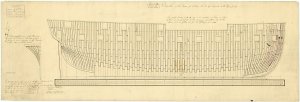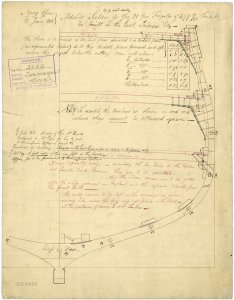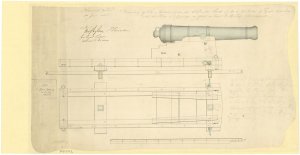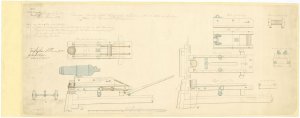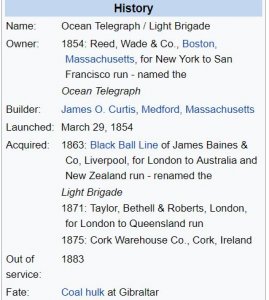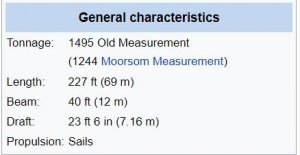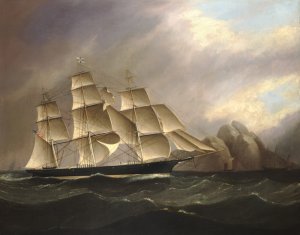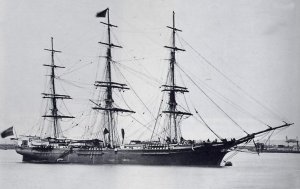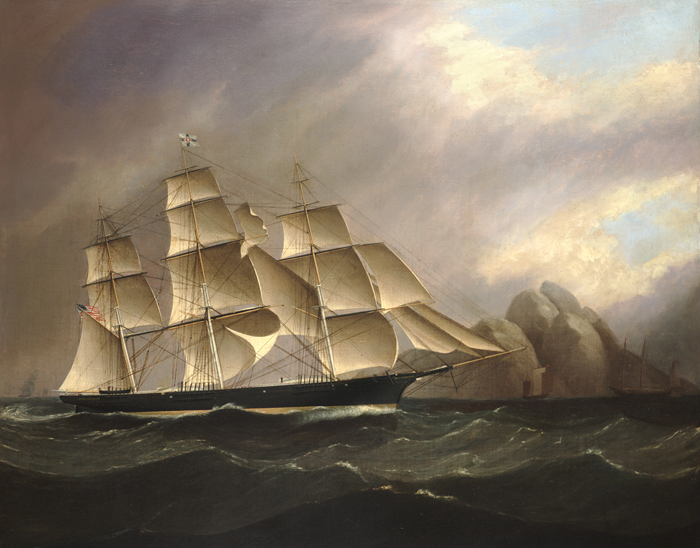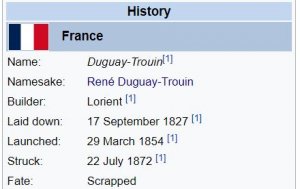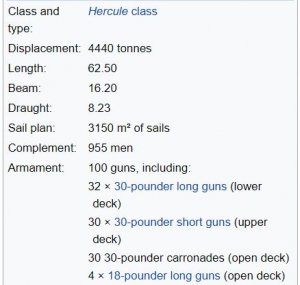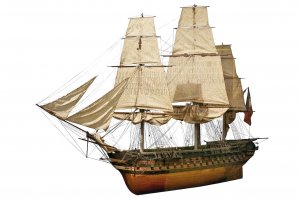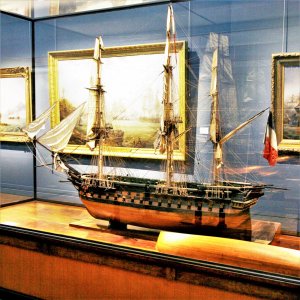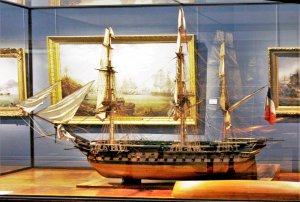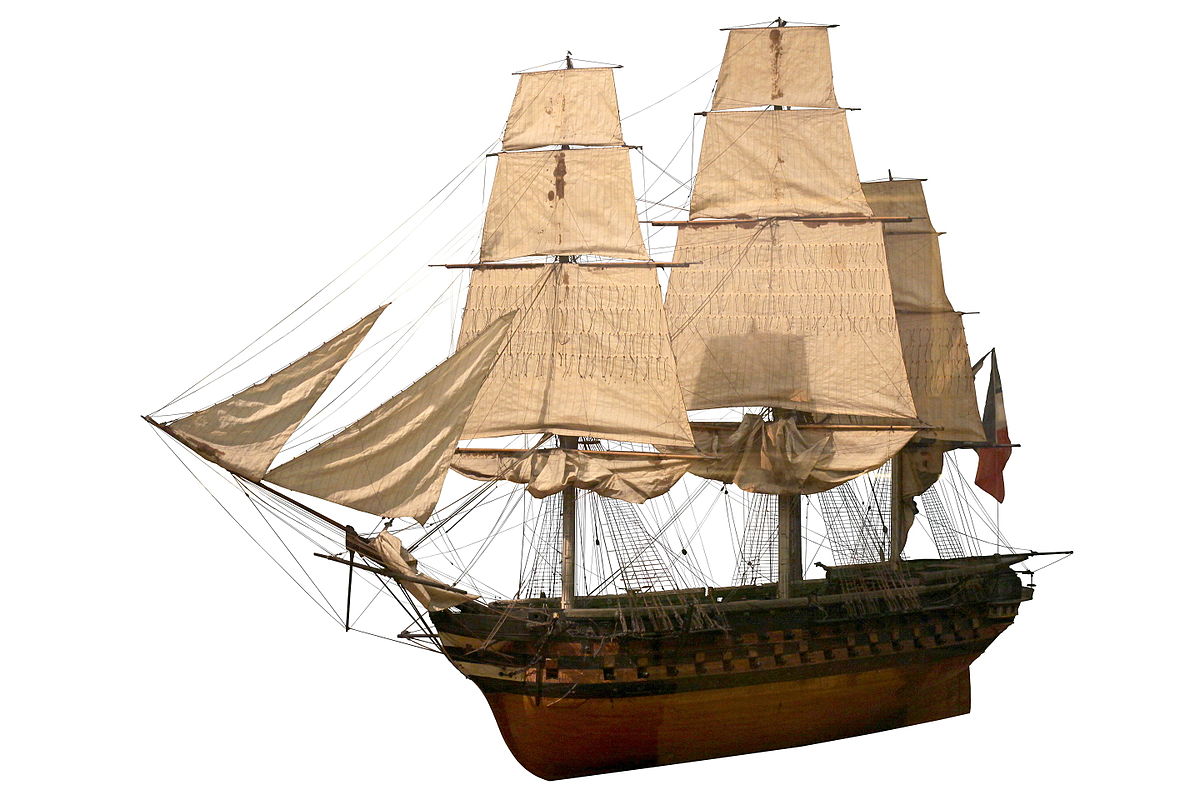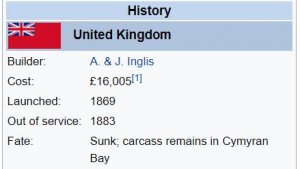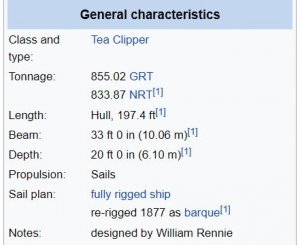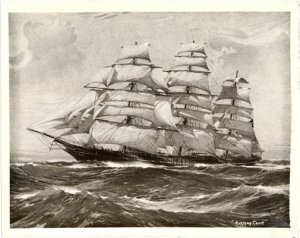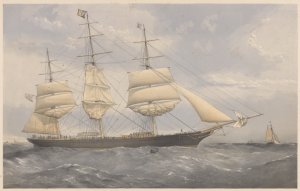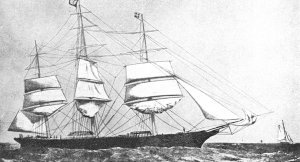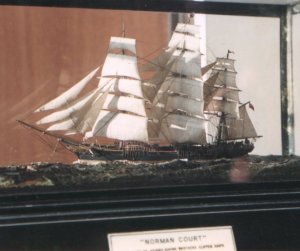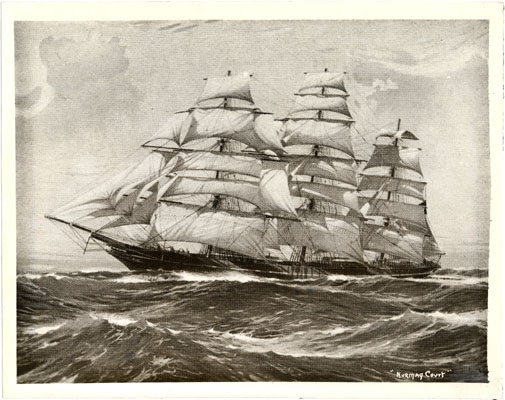Today in Naval History - Naval / Maritime Events in History
28 March 1914 – Launch of Fusō (扶桑, a classical name for Japan), the lead ship of the two Fusō-class dreadnought battleships built for the Imperial Japanese Navy.
Fusō (扶桑, a
classical name for Japan) was the
lead ship of the two
Fusō-class dreadnought battleships built for the
Imperial Japanese Navy. Launched in 1914 and commissioned in 1915, she initially patrolled off the coast of China, playing no part in
World War I. In 1923, she assisted survivors of the
Great Kantō earthquake.
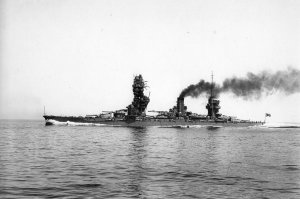 Fusō
Fusō was modernized in 1930–1935 and again in 1937–1941, with improvements to her armor and propulsion machinery and a rebuilt
superstructure in the
pagoda mast style. With only
14-inch (356 mm) guns, she was outclassed by other Japanese battleships at the beginning of
World War II, and played auxiliary roles for most of the war.
Fusō was part of
Vice-Admiral Shōji Nishimura's Southern Force at the
Battle of Leyte Gulf. She was sunk in the early hours of 25 October 1944 by
torpedoes and naval gunfire during the
Battle of Surigao Strait. Some reports claimed that
Fusō broke in half, and that both halves remained afloat and burning for an hour, but according to survivors' accounts, the ship sank after 40 minutes of flooding. Of the few dozen crewmen who escaped, only 10 survived to return to Japan.
Description
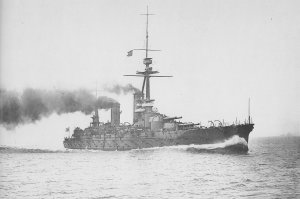 Fusō
Fusō on her sea trials, 24 August 1915
The ship had a length of 192.024 meters (630 ft)
between perpendiculars and 202.7 meters (665 ft)
overall. She had a
beam of 28.7 meters (94 ft 2 in) and a
draft of 8.7 meters (29 ft).
Fusō displaced 29,326 long tons (29,797 t) at
standard load and 35,900 long tons (36,500 t) at
full load. Her crew consisted of 1,198 officers and enlisted men in 1915 and 1,396 in 1935. During World War II, the crew probably totalled around 1,800–1,900 men.
During the ship's first modernization during 1930–33, her forward superstructure was enlarged with multiple platforms added to her tripod foremast. Her rear superstructure was rebuilt to accommodate mounts for 127-millimeter (5.0 in)
anti-aircraft (AA) guns and additional
fire-control directors.
Fusō was also given
torpedo bulges to improve her underwater protection and to compensate for the weight of the additional armor and equipment. During the second phase of her first reconstruction in 1934–35,
Fusō's torpedo bulge was enlarged and her stern was lengthened by 7.62 meters (25.0 ft). These changes increased her overall length to 212.75 m (698.0 ft), her beam to 33.1 m (108 ft 7 in) and her draft to 9.69 meters (31 ft 9 in). Her displacement increased by nearly 4,000 long tons (4,100 t) to 39,154 long tons (39,782 t) at deep load.
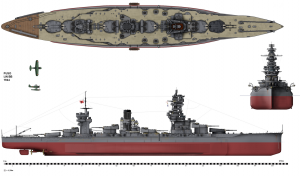 Propulsion
Propulsion
The ship had two sets of
Brown-Curtis direct-drive
steam turbines, each of which drove two propeller shafts. The turbines were designed to produce a total of 40,000
shaft horsepower (30,000 kW), using steam provided by 24 Miyahara-type
water-tube boilers, each of which consumed a mixture of coal and oil.
Fusō had a stowage capacity of 4,000 long tons (4,100 t) of coal and 1,000 long tons (1,000 t) of
fuel oil, giving her a range of 8,000
nautical miles (15,000 km; 9,200 mi) at a speed of 14
knots (26 km/h; 16 mph). The ship exceeded her design speed of 22.5 knots (41.7 km/h; 25.9 mph) during her
sea trials, reaching 23 knots (43 km/h; 26 mph) at 46,500 shp (34,700 kW).
During her first modernization, the Miyahara boilers were replaced by six new
Kampon oil-fired boilers fitted in the former aft boiler room, and the forward
funnel was removed. The Brown-Curtis turbines were replaced by four geared Kanpon turbines with a designed output of 75,000 shp (56,000 kW). During her 1933 trials,
Fusō reached a top speed of 24.7 knots (45.7 km/h; 28.4 mph) from 76,889 shp (57,336 kW). The fuel storage of the ship was increased to a total of 5,100 long tons (5,200 t) of fuel oil that gave her a range of 11,800 nautical miles (21,900 km; 13,600 mi) at a speed of 16 knots (30 km/h; 18 mph).
Armament
The twelve 45-
caliber 14-inch guns of
Fusō were mounted in six twin-gun turrets, numbered one through six from front to rear, each with an elevation range of −5 to +30 degrees. The turrets were arranged in an uncommon 2-1-1-2 style with
superfiring pairs of turrets fore and aft; the middle turrets were not superfiring, and had a funnel between them. The main guns and their turrets were modernized during the ship's 1930 reconstruction; the elevation of the main guns was increased to +43 degrees, increasing their maximum range from 27,800 to 35,450 yards (25,420 to 32,420 m). Initially, the guns could fire at a rate of 1.5
rounds per minute, and this was also improved during her first modernization. The orientation of Turret No. 3 was reversed during the modernization; it now faced forward.
Originally,
Fusō was fitted with a secondary armament of sixteen 50-caliber
six-inch guns mounted in
casemates on the upper sides of the hull. The gun had a maximum range of 22,970 yards (21,000 m) and fired at a rate of up to six shots per minute. She was fitted with five 40-caliber
three-inch AA guns in 1918. The high-angle guns were in single mounts on both sides of the forward superstructure and both sides of the second funnel, as well as on the port side of the aft superstructure. These guns had a maximum elevation of +75 degrees, and could fire a 5.99-kilogram (13.2 lb) shell at a rate of 13 to 20 rounds per minute to a maximum height of 7,200 meters (23,600 ft). The ship was also fitted with six submerged 533-millimeter (21.0 in)
torpedo tubes, three on each
broadside.
During the first phase of
Fusō's modernization of the early 1930s, all five three-inch guns were removed and replaced with eight 40-caliber
127-millimeter dual-purpose guns, fitted on both sides of the fore and aft superstructures in four twin-gun mounts. When firing at surface targets, the guns had a range of 14,700 meters (16,100 yd); they had a maximum ceiling of 9,440 meters (30,970 ft) at their maximum elevation of +90 degrees. Their maximum rate of fire was 14 rounds a minute, but their sustained rate of fire was around eight rounds per minute. At this time, the ship was also provided with four quadruple mounts for the license-built
Type 93 13.2 mm machine guns, two on the
pagoda mast and one on each side of the funnel. The maximum range of these guns was 6,500 meters (7,100 yd), but the effective range against aircraft was only 1,000 meters (1,100 yd). The cyclic rate was adjustable between 425 and 475 rounds per minute, but the need to change 30-round
magazines reduced the effective rate to 250 rounds per minute.
The improvements made during the first reconstruction increased
Fusō's draft by 1 meter (3 ft 3 in), soaking the two foremost six-inch guns, so they were removed during the first phase of the ship's second modernization in 1937 and 1938. During this same phase, the Type 93 13.2-millimeter (0.52 in) machine guns were replaced by eight
25 mm Type 96 light AA guns in twin-gun mounts. Four of these mounts were fitted on the forward superstructure, one on each side of the funnel and two on the rear superstructure. This was the standard Japanese light AA gun during World War II, but it suffered from severe design shortcomings that rendered it a largely ineffective weapon. According to historian Mark Stille, the twin and triple mounts "lacked sufficient speed in train or elevation; the gun sights were unable to handle fast targets; the gun exhibited excessive vibration; the magazine was too small, and, finally, the gun produced excessive muzzle blast". The configuration of the AA guns varied significantly; in July 1943, 17 single and two twin-mounts were added for a total of 37. In July 1944, the ship was fitted with additional AA guns: 23 single, six twin and eight triple-mounts, for a total of 95 in her final configuration. These 25-millimeter (0.98 in) guns had an effective range of 1,500–3,000 meters (1,600–3,300 yd), and an effective ceiling of 5,500 meters (18,000 ft) at an elevation of +85 degrees. The maximum effective rate of fire was only between 110 and 120 rounds per minute because of the frequent need to change the fifteen-round magazines.
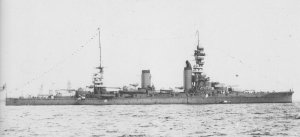 Armor
Armor
The ship's
waterline armor belt was 305 to 229 millimeters (12 to 9 in) thick; below it was a
strake of 102 mm (4 in) armor. The
deck armor ranged in thickness from 32 to 51 mm (1.3 to 2.0 in). The turrets were protected with an armor thickness of 279.4 mm (11.0 in) on the face, 228.6 mm (9.0 in) on the sides, and 114.5 mm (4.51 in) on the roof. The
barbettes of the turrets were protected by armor 305 mm thick, while the casemates of the 152 mm guns were protected by 152 mm armor plates. The sides of the
conning tower were 351 millimeters (13.8 in) thick. The vessel contained 737 watertight compartments (574 underneath the armor deck, 163 above) to preserve buoyancy in the event of battle damage.
During her first reconstruction
Fusō's armor was substantially upgraded. The deck armor was increased to a maximum thickness of 114 mm (4.5 in). A longitudinal
bulkhead of 76 mm (3.0 in) of high-tensile steel was added to improve underwater protection.
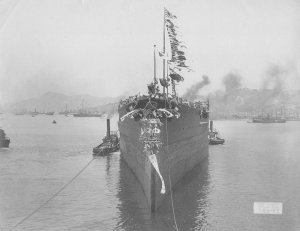
Launch of
Fusō, 28 March 1914
https://en.wikipedia.org/wiki/Japanese_battleship_Fusō

en.wikipedia.org
